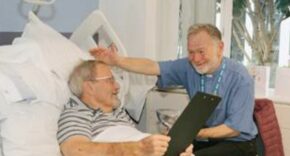
University of Bath researchers and collaborators will use new European funding to tackle a maths problem that limits many modern technologies – including those that underpin WiFi, mobile phones, radar, sonar and medical imaging.
A grant of €8.7 million (£7.2 million) has been awarded to three European research institutions, including the University of Bath, to tackle a problem in computational maths that hinders the precision, speed and reliability of many modern technologies.
The funding will be used to solving the long-standing problem of simulating the behaviour of high-frequency acoustic and electromagnetic waves in an accurate, fast, and reliable way. These waves underpin many of society’s communication and imaging technologies, such as WiFi, mobile phones, radar, sonar and medical imaging.
The aim of this six-year project is to design new algorithms to simulate high-frequency waves, and then implement these in open-source software that engineers and scientists can then use in the design of new technologies.
This project is made possible by a prestigious European Research Council (ERC) Synergy Grant – a funding initiative designed to bring together researchers from two or more European institutions to solve ambitious research projects that cannot be dealt with by a single team in isolation. This is the first such grant to be awarded to the University of Bath.
The ERC project will be run by Bath mathematician Professor Euan Spence – who is also the project’s corresponding principal investigator – along with Professor Jeffrey Galkowski from University College London and Dr Pierre-Henri Tournier from the Centre National de la Recherche Scientifique (CNRS), based at Sorbonne Université in Paris.
Early diagnosis of strokes
One example of the need for fast and reliable algorithms for simulating electromagnetic waves comes from microwave imaging – an emerging technology for diagnosing strokes.
Microwave imaging offers advantages over more traditional imaging techniques like CT and MRI scans, as it is non-invasive, portable and potentially helpful for early diagnosis. It is particularly useful for differentiating between the two different types of stroke, however to optimise patient outcomes, results need to be delivered in less than 15 minutes.
The ERC project team aims to build on previous work of Dr Tournier on this problem, to meet this goal of rapid diagnosis.
Professor Spence, who is a member of the EPSRC Centre for Doctoral Training in Statistical Applied Mathematics (SAMBa) based at the University of Bath, said: “Mathematicians have been studying high-frequency waves for many years, however, the deep insights about high-frequency waves obtained by pure mathematicians – who study these waves without thought of their applications – have very seldom been used in the design of numerical algorithms to simulate these waves.
“This project seeks to exploit this untapped potential and transform how the scientific community simulate high-frequency waves.”











